It is said that the study of animal behaviour can show us information into the foundation for animal training, or more generally into the area of animal care. It may also provide a very real insight into the understanding of our own human behaviour.
As you may have seen from your own past experiences with animals they share some behavioural characteristics with people. Do not assume too much similarity as this can be dangerous and you may get the wrong signals. Animal behaviour is far less affected by choices reached through reasoning and more by instinct.
When working with either individuals or groups of animals it is important that you are able to understand the behaviour of those animals. Therefore, it is necessary that you observe those animals (individual or groups) and record their behaviour.
The recording of their behaviour must be completed in accordance with your organisation's policies and procedures.
What is animal behaviour?
Behaviour is any externally observable activity of an animal.
Animal behaviour is the way an animal acts, or reacts, to other organisms or the environment.
In general, it includes:
- Animal activities and responses based on:
- Species, breed, age and sex of the animal
- The time of the day or night
- The breeding season
- The environment
- Normal behaviour in various contexts:
- Breeding
- Eliminative (faeces, urine)
- Grooming
- Ingestive (eating, drinking)
- Resting
- Social
- Sexual
- Maternal
- Communicative
- Shelter seeking
- Investigative
- Allelomimetic (imitation or mimicry of other animals around them)
- Maladaptive (not being able to adapt to particular situations)
Purpose of animal behaviour
People assume that all animal behaviour is designed to support the natural survival of the animal, either directly or indirectly. This is not always the case; animals can behave self-destructively, out of habit, or purely out of boredom, just as humans can. To better understand the behaviour, we should also consider what motivates the animal to behaviour in such a manner.
There are a number of areas that can motivate an animal to behaviour in a certain way. But we will look at the two main areas that animals get their behaviour from There are two main areas these are:
- Genetics
- Learned/environmental
Genetics
Genetics is of prime importance (i.e. inherited characteristics). Genetic characteristics are also sometimes referred to as:
- Inborn characteristics
- Innate characteristics
- Instinctive characteristics
Most animals are genetically programmed to act in certain ways in certain situations.
Watch: Types of Animal Behavior (12:06 minutes)
Innate behaviour is a type of behaviour that is controlled by genes. Click on the link below to access YouTube and watch the video to learn more.
https://www.youtube.com/watch?v=aCTnmxJE9NQ
Post Watch Task: Write a definition for your own learning for:
- Instinctive behaviour
- Learned behaviour
Learned/Environmental
Behaviours can be learned through the experience of interacting with the environment (which includes the people or other creatures in it), or it can be learned through personal, subjective experience (perceptions, thoughts and feelings). In the case of animals, these latter factors are usually difficult to identify.
Particularly in regard to animals, no behaviour can ever be characterised as totally instinctive or totally learned. Even though learned and genetic factors both play a role in all behaviours, the relative significance of each is variable.
Some behaviours in animals can be relatively unlearned and, therefore, almost impossible to modify. In such cases, we can determine that genetics is the major influence. Other behaviours are relatively easy to modify, thus mostly learned. In such cases, we can determine that genetics has a minor influence.
Milestones in developmental progress from newborn to mature age
Every animal will have certain milestones that they will achieve throughout their life from birth to maturity. Every animal species will vary, so we will look at a dog here.
Neonatal period (birth to 2 weeks)

- Relatively helpless and rely completely on their mother
- Limited movement, cannot take the weight of their own bodies as yet
- Will vocalise when separated from its mother
- Feed by suckling from the mother
- Urinate and defecate by stimulation of the mother
- Kept clean by the mother
Transitional period (2-3 weeks)

- Begin to socialise by practice growling and wagging their tail
- Begin to respond to light and movement
- Play fight with siblings
- Shows an interest in semi-solid foods
- Begin to relieve themselves away from the nesting area
Socialisation Period (3-12 weeks):
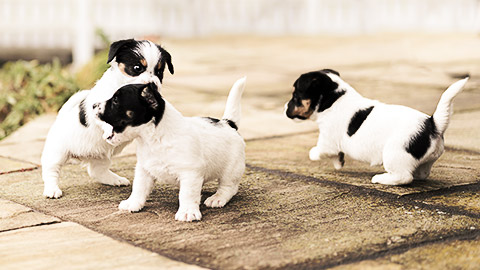
- Begin to show a startle response
- Begin to stand and walk
- Begin to bark
- Begin to wean from their mother
Juvenile Period (12 weeks to juvenile):
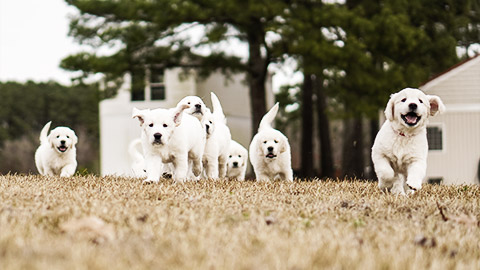
- Sense organs fully developed
- Growth rate slows
- Adult teeth appear
- Reaches sexual maturity
Adolescence:
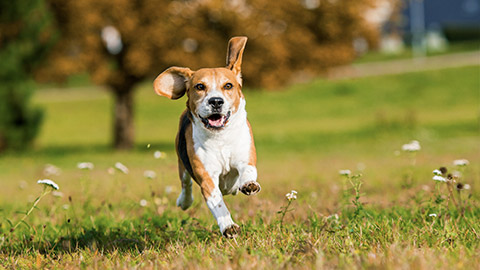
Puppies mature very quickly, and the smaller the breed, the faster they reach maturity. In small breeds, adolescence can start as early as 5 months. In larger breeds it can start as late as 9 or 10 months, and very large breeds might not go through adolescence until 12-18 months. When your dog reaches adolescence, you might see some or all of the following behaviours:
- aggression
- plenty of energy
- very short attention span
- poor socialisation
- disobedience
- wandering
- leg cocking (males); and
- obsessive mounting behaviour
Activity
Complete a development cycle for parrots and kittens, using the same structure as the information for puppies above. You can use the following websites as a starting point, but to complete some of the sections you will need to do some more research on your own.
What is the developmental cycle of baby parrots? – Companion Animals (extension.org)
Kitten Development Timeline: Weekly Milestones | Hill's Pet (hillspet.com)
Once you have completed as many of the fields as you can, you will be able to save your work as a pdf and download it to your device for your own learning records.
Normal and abnormal behaviours in different animal species
It is important to know difference between clinical signs, abnormal behaviour and unwanted behaviour.
- Clinical signs are an involuntary physiological response to illness or injury.
- Abnormal behaviour is a behaviour that is generally out of character for that individual, is an atypical response to a stimuli or event or an increase or decrease in intensity of a typically 'normal' behaviour.
- Unwanted behaviour is a behaviour that is naturally expressed by an animal that does not fit into our human lifestyles.
Normal behaviours in cats and dogs

Dogs and cats as a species have normal behaviours but we can also look at breed specific behaviours.
Examples of normal behaviours in cats and dogs:
- Grooming
- Playing
- Chasing
- Sleeping
- Digging
- Chewing
- Sniffing
- Vocalising
Breed specific examples:
- Working dogs – herding
- Pointers – pointing
- exotic cats - wool sucking
Abnormal behaviours in cats and dogs
Stereotypic (repetitive behaviour patterns without goal or function) or compulsive behaviours such as circling, pacing, self-mutilation (licking or biting – common in birds too with feather plucking), excessive vocalising, compulsive tail chasing, pica, coprophagia.
Unwanted behaviours in cats and dogs
Vocalising (not excessive), digging, chewing, chasing, some displacement behaviours such as redirected aggression (where a cat of a dog sees another animal outside that they want to attack but can’t get access to it they will then redirect their aggression to the next person or animal that comes near them)
Clinical signs
Self-mutilation due to pain, coprophagia (eating own poop) due to malnutrition, stereotypic behaviours due to neurological (brain) disease, inappropriate urination due to a Urinary Tract Infection.
It is important to keep in mind that you cannot look at a behaviour as an isolated event. You need to be aware of the history of the animal and also look at the environment. A behaviour is partially influenced by the animals surroundings and its lived experience.
Eg. Excessive vocalisation could be due to stress because the animal has previously always been with company and has now been left alone with no enrichment. A normally placid dog becoming extremely fear aggressive when approached by someone wearing a helmet could be because of a past trauma and the animal has been conditioned to fear this.
Identify and encourage natural behaviour
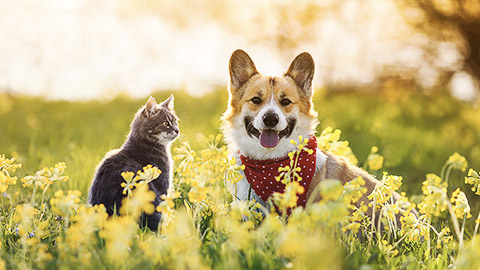
There are times when you are working with or assisting with animals, and you will have to use strategies to encourage natural behaviour. It is important that these strategies are identified and implemented, and signs of stress are recognised, recorded and the possible stressors are determined.
Strategies to encourage natural behaviour, including activities and equipment
Strategies to encourage natural behaviour may include:
- Activities and equipment:
- To encourage foraging or hunting for food appropriate for species
- To provide exercise and physical fitness and dexterity relevant to animal species
- To provide opportunities to live and socialise in an environment appropriate for particular species
- To rest, hide or shelter in appropriate housing
- To reinforce the role of owner or handler in an appropriate context for the nominated species
One of the strategies that might be used is known as temperament testing, which is quite often used to ascertain whether an animal is suitable for adoption, and what type of person or home that they would be suited for example:
- You have a dog in your workplace that is looking for adoption, so you test the dog’s temperament using your clinic’s testing guide.
- You deliberately walk past the cat cages with the dog and the dog reacts aggressively towards the cats, you complete the testing and everything else is good, you walk the dog back past the cat area again and again he reacts aggressively toward the cats.
From the example above you can see that the dog is aggressive with cats therefore you would note that this dog should not be homed with cats.
Factors to consider before developing enrichment programs
The strategies you use to encourage natural behaviours in animals need to be thought out and considered well. They need to include consideration of the following:
- The cognitive ability of the animal species
- Providing age-appropriate enrichments and individual animal needs
- Social groupings and hierarchy
- Novel food and potential dietary consequences, including toxicity and parasitic infection
- Safety of objects and infrastructure
- Introducing new enrichments – observing animal reactions
- Breed specifications e.g., social, herd, mentality and working
Recognise and record signs of stress and determine possible stressors

Signs of stress
It is extremely important that you can also identify signs of stress, as this could indicate that the animal is unwell, and, therefore, may react in a different way to normal.
Signs of stress may include:
- Aggressive behaviour
- Destruction of equipment or habitat
- Inappetence (not eating)
- Over-stimulation of animal
- Repetitive actions
- Self-mutilation
- Subdued behaviour
- Trembling
- Vocalisation
The animal may show signs of stress whilst in the cage but once outside is completely different and relaxed, this would indicate that they don’t like to be in confined spaces, etc…
Report maladaptive or undesirable behaviours
It is extremely important that any abnormal behaviour which might indicate less than optimum physical and behavioural well-being MUST be reported to a supervisor (senior nurse), manager or other person in authority.
This will mean using the facilities communication procedures and systems, and technology which will be relevant to your organisation and work responsibilities It is important that you learn how to:
- Recognise
- Respect
- Respond
It is important that you learn how to read the body language of animals, as this is crucial to the handling of the animals in a safe and responsible manner.
By tapping into your ability to empathise and learning to recognise the signs of stress, boredom, fear and anxiety, you can utilise your understanding of behaviour as a key component of restraint, treatment and diagnosis in any setting.
Keeping the animal as calm and as happy as possible makes their experiences positive.
You should watch the animals for any abnormal behaviour which may indicate a less than optimum physical and/or behavioural wellbeing must be reported.
What abnormal behaviour is, including:
- Exaggerated forms of normal behaviour:
- Non-stop barking
- Constant digging
- Repetitive patterns or action:
- Pacing in straight line or figure eight patterns
- Restlessness
- Stationary, non-purposeful movements:
- Head tossing
- Swaying
- Self-mutilation
Activity
The tasks below review what we have covered about animal behaviours.

Whilst working in an animal care facility you may be required to participate in the development as well as the opportunity to implement long-term strategies to manage the undesirable behaviour of animals within those facilities.
Why are we talking about managing undesirable behaviours? Animals are not much different than humans in this regard – when bored or not able to engage in their full range of natural behaviours, animals can act in ways that are undesirable in human environments. This is where enrichment activities come in.
Strategies to manage undesirable behaviours
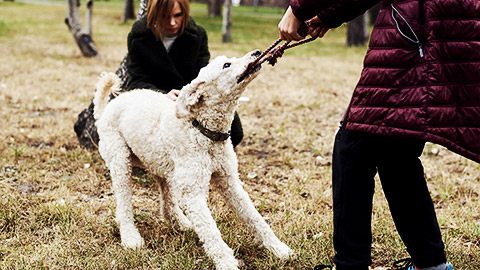
There are a number of areas in the management and strategy of dealing with those undesirable behaviours. Strategies to encourage natural behaviour may include:
- Consulting behaviour specialists for:
- Behaviour modification of animal
- Training for owner or handler
- Food or food-related enrichment to encourage foraging and hunting may be provided by:
- Giving animals opportunities to hunt or forage for food by hiding it in substrates
- Giving the animal food that requires processing (e.g. Peeling or shelling fruit or seeds)
- Gnawing manipulada (things to chew on)
- Providing equipment to encourage appropriate exercise:
- Access to larger areas for free exercise or lead walking
- Climbing poles and scratching posts
- Ladders, ropes and treadmills
- Providing equipment and toys for skill development and time occupiers:
- Non-edible items that can be easily added or removed from the environment, such as toys (e.g. Balls, bells, toys, puzzles and mirrors)
- Providing species-appropriate housing and bedding:
- Hide boxes, tunnels and ladders
- Nest building or bedding material:
- Shredded paper
- Straw
- Substrate
- Wood shavings
- Perches, roosting shelves and nest boxes
- Social enrichment:
- Levels of contact with other animals of the same species or breed
- Social interactions between the animal and the carer may also be appropriate
Any strategies and or management must be done in accordance with your clinic/facilities policies and procedures as well as in consultation with the supervisor, manager or business owner.
Short-term behavioural and environmental enrichment for animals
There may some circumstances a requirement for short-term management of animals that are exhibiting undesirable behaviour, this may be in a circumstance where the animal is malnourished and showing signs of stress as well as fear.
Then you may have to use a short-term strategy such as:
- Providing the animal with food that will assist in the recovery of the animal
- Providing the animal shelter:
- Shelter from the element
- Shelter and security whilst they are eating
No matter what the strategy that is being conducted it must be conducted in accordance with the facilities policies and procedures and as directed. You must also make sure that you make a concise note on the effect of the strategy.
Preparing and implementing enrichment programs
When preparing and implementing enrichment programs you need to make sure you are complying with animal welfare and health and safety requirements.
Safe and humane animal handling techniques
When handling and conducting behavioural management processes it is extremely important that you observe the health safety requirement as per the state and/or territories Health and Safety legislation as well as your facilities policies and procedures on health and safety.
Following the health and safety requirements will not only look after your own health and safety as well as other staff and visitors to the facility but will also take into account the animal’s health and welfare in your facility.
Workplace policies and procedures relevant to providing enrichment to animals, including health and safety and animal welfare
Workplace policies and procedures, animal welfare and health and safety requirements may include:
- Animal welfare requirements:
- Compliance to appropriate state or territory legislation and regulations
- Keeping health and behaviour records
- Providing adequate housing and stock levels
- Providing appropriate enrichment opportunities
- The absence of pests and vermin
- The compatibility of species and breeds
- Workplace health and safety requirements:
- Use of relevant personal protective equipment, such as animal handling gauntlets and eyewear
- Hazard identification, risk minimisation and workplace procedures for:
- Animal bites, kicks, scratches, crush injuries
- Biological hazardous waste and sharps disposal
- Gas leakage
- Handling, use, storage, transport and disposal of chemicals and medicines
- Inhalation of aerosol particles
- Manual handling, including carrying, lifting and shifting
- Needle pricks and cuts from other sharps
- To control the release of infective agents (animal and human)
- Transmission of zoonotic diseases.
It is important when handling any animal that you follow your workplace hygiene standards, this includes the use of:
- Cleaning agents
- Cleaning techniques
- Cleaning equipment and materials
It is important that you treat all animals using the principles of animal welfare and ethics that we have already discussed in this programme.
The community and your clients are entitled to expect that you will:
- Always consider the health, welfare and respectful treatment of the animal
- Take personal responsibility to uphold the good reputation and integrity of the profession
- Strive to provide the best possible services and improve the quality of animal health and welfare at every opportunity
- Foster and maintain good communications and relationships with your clients, earning their trust, and respecting client confidentiality
- Understand and comply with all relevant laws and guidelines, especially those regarding animal welfare, veterinary certification and the prescribing of restricted substances
- Foster and endeavour to strengthen relationships with your professional colleagues, utilising their skills where appropriate
- Maintain and continue to enhance your professional knowledge and skills
Implementing Enrichment Programmes
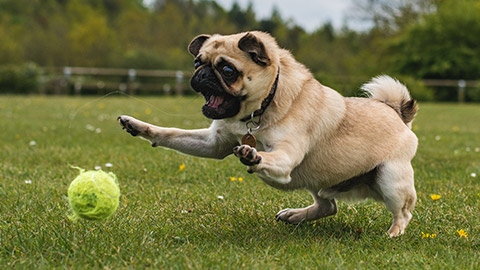
What is enrichment?
The term 'enrichment' implies that there is an improvement in quality, but the word and the concept of environmental enrichment are often misused and are applied simply when changes are made to the environment, or when the environment is made more complex.
Such changes or increases in complexity do not necessarily involve any improvement in the quality of the environment for the animals and the animals' welfare. Indeed, some changes may actually decrease the quality for some animals.
You need to understand how a particular environment is impacting on the animal; you should also focus on the outcomes for the animal when making changes to their environment. Only if we can demonstrate that the change to the environment has improved that environment for the animal welfare, then you can say that environmental enrichment has occurred, and that the welfare of the animal has been improved.
It is important that when you are using any enrichment strategy within your facility that you are aware of or make sure that you research and assess the finding of the research as to any adverse consequences that may occur as a result of the enrichment strategy.
Enrichment gives animals something to think about, encourages exercise, and gives animals a degree of control of their environment by giving them choices. Basically, enrichment helps keep life interesting and challenging.
Enrichment strategies may include:
- Physical and psychological enrichment such as:
- Hiding food to encourage activity
- Long walks
- Brushing, patting etc…
- Social enrichment such as:
- Providing activities with other animals
- Sensory stimulation:
- Play music, audio books, T.V when not at home
- Provide scents in the area
Most species of animal will have different types of enrichment, so you first need to look at the animal and then (if required) research the types of enrichment suitable for the species. If you are uncertain, speak with your supervisor to get their ideas and make sure you check out the organisational policies and procedures. There may be specific enrichment procedures for animals handled in the facility
Olfactory and gustatory enrichment
Olfactory enrichment is using the animal’s sense of smell and gustatory enrichment is using taste.
For both these types of enrichment you could use:
- Stuffed paper bag with various objects (food, straw, other animal smells)
- Piercing holes in tubes and adding food that can be grabbed or fall out
- Healthy treats hidden in straw and a box can entertain for hours
- Hanging Ice block
- Food or some other reward is placed in the box which encourages manipulation and play
- Scent-infused sacks are a simple form of olfactory enrichment
Adverse consequences of enrichment strategies
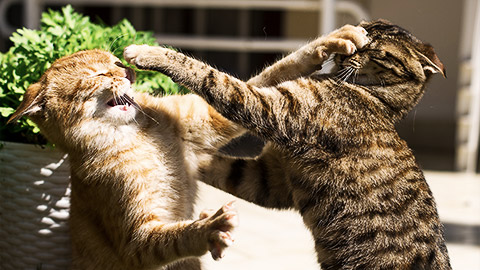
If you have implemented the enrichment procedure and it has had an adverse effect on an animal, you may need to alter it. Adverse consequences to enrichment strategies may include:
- Destruction of habitat
- Fighting between animals over access to enrichment items or activities leading to potential for injuries
- Impact on security of animals, staff and public of enrichment activity
- Life of enrichment item or activity compared to cost
- Over-stimulation of animal
- Refusal of animal to utilise enrichment items
- Self-mutilation or other signs of stress
If at any time you observe any adverse consequences to the enrichment strategy that has been put in place for an animal, it is important that you notify the appropriate person.
Cleaning and replacing enrichment items
Once you have conducted an enrichment program, and the items are no longer being used, then those items that have been used for the enrichment program must be either:
- Cleaned
- Decontaminated
- Sterilised
- Disposed of
- Replaced
Any of the above actions must be done in accordance with your facilities policies and procedures.
What is the difference between cleaning, disinfecting and sterilising?
The differences between cleaning, disinfecting and sterilising include:
- Cleaning
- General removal of debris (dirt, food, faeces, blood, saliva and other body secretions)
- Reduces amount of organic matter that contributes to proliferation of bacteria and viruses
- Disinfection
- Removes most organisms present on surfaces that can cause infection or disease
- Sterilisation
- The killing or removal of all organisms
Observing animal responses to enrichment
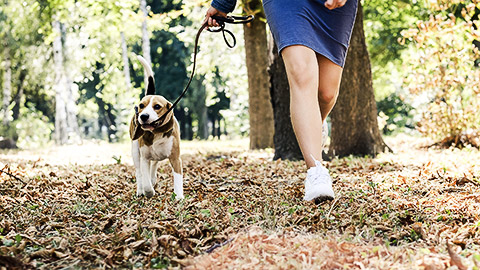
When an enrichment strategy program has been implemented it is important to observe any responses to the strategy and record and report, those observations.
The reason is so that any alteration in the behaviour of the animal may be recorded, and the source or reason for the response be noted. Once this has been recorded and reported, a revised strategy may be needed, especially if the response is a negative one and the response is undesirable behaviour. Then a new or revised strategy can then be implemented.
Any suggestion that you may have in regard to the modification of the enrichment program must be implemented and reviewed in consultation with your supervisor, manager and /or veterinarian. Any implemented modifications and reviews must be documented as per your facilities policies and procedures.
Formats for documenting short-term and long-term enrichment strategies
The format you use to document enrichment strategies will vary depending on your workplace. It may be:
- Written on a board located with the animal
- Documented in the animal’s chart
- Documented in the animals’ notes
Check your workplace policies and procedures to ensure you know the format used for the animals’ notes.
Reviewing and modifying enrichment strategies
As part of your duties you may notice that there needs to be a change to the enrichment program, it is important that you notify the appropriate person and take notes of your suggestions in regard to those changes. Your suggestions for program modification may include:
- Changing diet
- Changing group dynamics by adding or removing other animals
- Consultation with behavioural specialist
- Consultation with veterinarian on the use of chemical therapy to assist animal's ability to deal with stressful situation
- Further education of owner or handler:
- To control their own responses to animal behaviour
- To identify triggers in animal behaviour
- To provide more effective leadership
- Increasing or decreasing amount and timing of stimulation offered to animal
- Providing different forms of enrichment
- Re-locate animal to more suitable environment
Once you have permission to modifications of the enrichment program you will need to implement these the document the final outcomes of enrichment activities.
Activity
Design an enrichment activity that you could use with one of the animals on your work placement. With your supervisor’s permission, try the enrichment activity with the animal that you designed it for. After the activity reflect on how well it went.
- Did the activity go as you planned it to? Why or why not?
- Did the animal show any unexpected negative behaviours? If yes, what would you change about the activity to reduce or prevent these behaviours?
- What would you do differently next time?
Feel free to share your experiences with your enrichment activity in the forum.
Activity
Let’s check how far you have come in learning about enrichment activities.
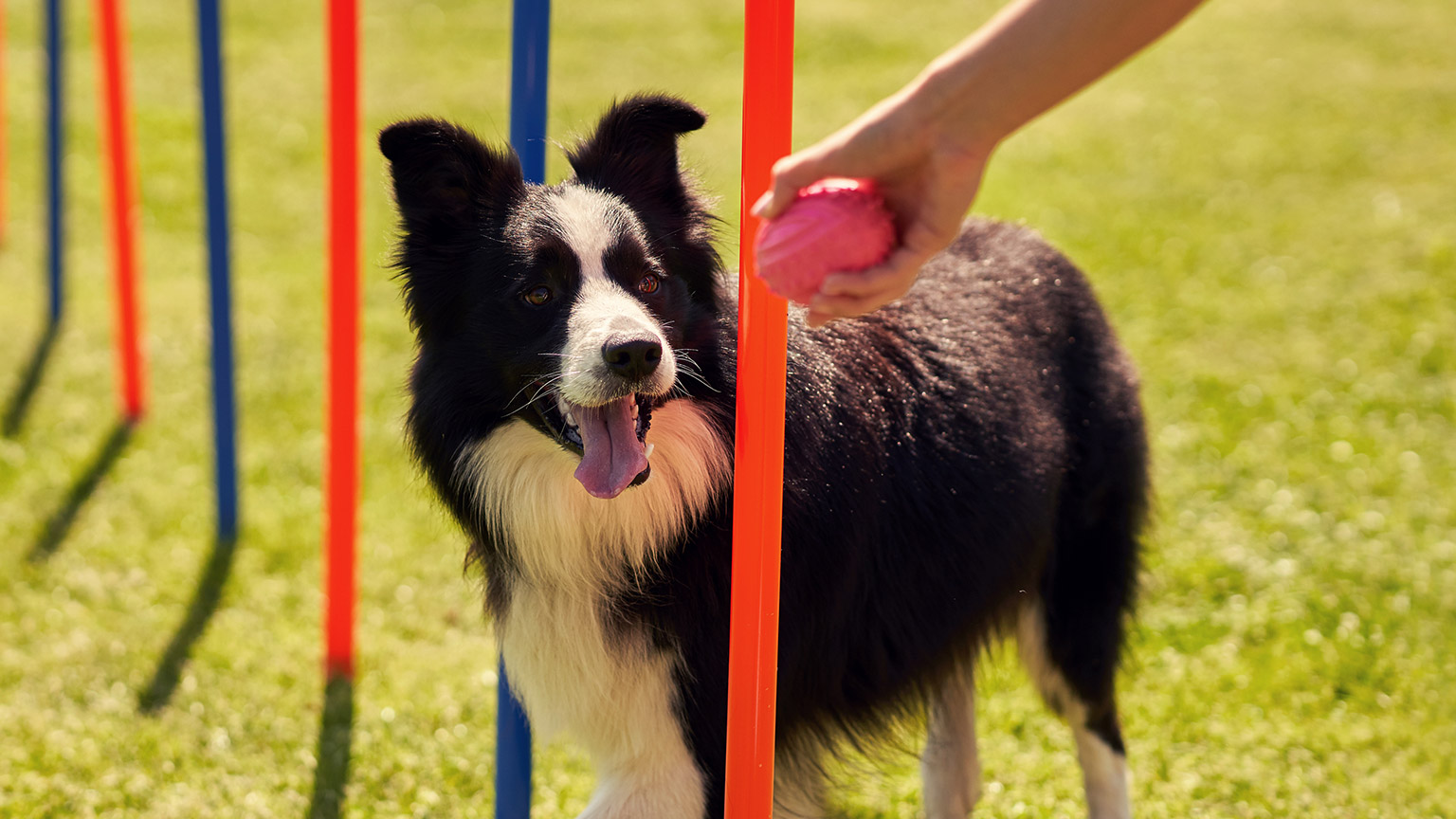
There are four types of behaviour modifications or conditioning that can be used when training animals. These are:
- Positive reinforcement
- Positive punishment
- Negative reinforcement
- Negative punishment
Watch: Ian Dunbar: Dog-friendly dog training (14.47 minutes)
Watch this Ted Talk on dog training. Trainer Ian Dunbar asks us to see the world through the eyes of our beloved dogs. By knowing our pets' perspective, we can build their love and trust. It's a message that resonates well beyond the animal world.
Pre-Watch Question: Before you watch the video, take a moment to think about a dog that you know well. How do you think that dog perceives the world, and the humans around it?
Post Watch Task: Write down what you think Ian Dunbar’s top 3 key points or tips are for humans that share their lives with dogs.
Positive reinforcement
This is when a desirable stimulus is introduced after an animal has demonstrated a behaviour.
The introduction of the stimulus reinforces the behaviour, making is more likely for the behaviour to reoccur.
For example:
You are training your dog to sit. After voicing the command 'sit' and signaling your hand, the dog sits. You reinforce this behaviour by giving the dog a tasty treat.
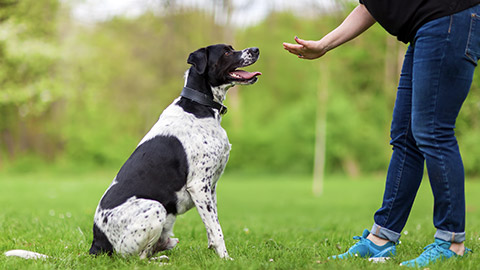
Positive punishment
This is when an undesirable stimulus is introduced to discourage a behaviour. The idea is to decrease the behaviour but not to discipline the animal.
The timing of positive punishment must be timed correctly. The stimulus must be introduced while the animal is demonstrating the behaviour and ideally just as the behaviour starts.
For example:
The horse racing industry use whips when the horses slow down to encourage them to run faster.
Negative reinforcement
This refers to an undesirable stimulus being removed to encourage the behaviour. When you remove something that increases or maintains the frequency of the behaviour.
Negative reinforcement can either be:
- When you take away something negative when the dog does something right
OR
- When you take away something positive when a dog does something wrong
For example: The use of shock collars in barking dogs. When the dog stops barking, you take the barking collar off.
Negative punishment
This refers to a desirable item being removed to discourage a behaviour.
FOR THIS TO BE EFFECTIVE, THE ITEM THAT IS REMOVED MUST BE OF HIGH VALUE TO THE ANIMAL.
For example:
If a puppy is biting or nipping, the owner gets up and walks away. In this situation the owner is the high value item.

Activity
Choose a companion animal, preferably not a dog because we have just talked about these. Think of a specific action you could take with the animal for each of the following behaviour modification strategies:
- Positive reinforcement
- Positive punishment
- Negative reinforcement
- Negative punishment
Share your ideas in the forum.
Activity
Let’s try some positive reinforcement and reward your hard work with a fun activity!
Your hard work and study is paying off, and you should be feeling more confident about handling and working with different types of companion animals. In the next topic, topic 8 we are going to look at maintaining the daily welfare of our companion animal whanau.
